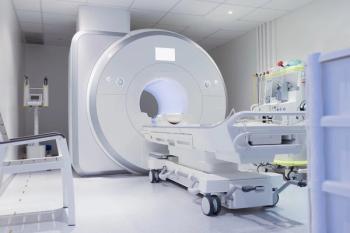
Providers
Latest News
Latest Videos

Podcasts
CME Content
More News

New research suggests stress cardiac MRI could help diagnose angina and improve quality of life for patients whose arteries appear clear on angiography.

Only 4% of NIH prevention projects target health disparities, revealing a major gap between equity research and real-world implementation.

Prioritizing education and shared decision-making can help patients with newly diagnosed heart failure feel less overwhelmed, said Martha Gulati, MD.

Sotatercept can enhance treatment for pulmonary arterial hypertension, even in patients already on conventional therapies, said Vallerie McLaughlin, MD.

The oral PCSK9 inhibitor enlicitide can change cholesterol management with high efficacy and improved adherence, said Ann Marie Navar, MD, PhD.

In a phase 3 trial, the investigational oral PCSK9 inhibitor enlicitide reduced LDL cholesterol by nearly 60% in adults with or at risk for ASCVD.

Experts at AHA 2025 outlined how digital tools, inclusive trials, and safer deprescribing can reshape cardiovascular care for aging adults.

Gefurulimab shows significant improvements in myasthenia gravis (MG) symptoms, offering a convenient self-administered treatment option for patients.

Ritlecitinib significantly improves hair regrowth and reduces psychosocial burdens in patients with alopecia areata, enhancing emotional well-being over time.

Key factors influencing chronic urticaria duration highlight the importance of early identification and management in primary care settings.

Research shows how low-dose aspirin, lifestyle habits, and the Life’s Essential 8 checklist can affect cardiovascular risk in patients with type 2 diabetes.

In the phase 3 BRAVE-AA-PEDS trial, baricitinib led to significant scalp, eyelash, and eyebrow hair regrowth at 1 year in adolescents with alopecia areata.

Lisa Taylor-Swanson, PhD, explains how including Indigenous and Hispanic women in conversations around menopause care helps fine-tune interventions.

The case shows how such cardiac involvement can mimic neurologic disease and demand complex, multidisciplinary management.

Despite social media frenzy, there is limited evidence around testosterone’s impact on muscle, mood, and other menopausal symptoms.

Bariatric surgery halves mortality and reduces liver, heart, and kidney complications in steatotic liver disease vs nonsurgical care.

The study underscores the importance of repeat testing in cases where myelin oligodendrocyte glycoprotein immunoglobulin G tests are borderline.

Despite improved selectivity, real-world data point to persistent cardiovascular challenges even with next-generation BTKi therapies.

A recent study reveals a heightened stroke risk in asthma patients recovering from severe COVID-19, emphasizing the need for proactive monitoring and management.

Nicoletta Colombo, MD, PhD, of the University of Milan-Bicocca, discussed the rationale behind paclitaxel with bevacizumab and pembrolizumab in ovarian cancer.

There is a significant link between chronic spontaneous urticaria and cardiovascular disease risk, highlighting the need for routine assessments.

Experts discuss how topical therapies effectively manage atopic dermatitis in pediatric patients, enhancing outcomes and addressing unique challenges.

Hair loss disorder can lead to a significant psychological and emotional burden that warrants more attention, new research suggests.

Deuruxolitinib 8 mg BID was found to be the most effective oral JAK inhibitor for severe alopecia areata in a new meta-analysis.

Despite clinical definitions suggesting patients recover from exacerbations within 2 weeks of hospital discharge, most patients in a qualitative survey believed they had not achieved recovery within 3 months.




























































